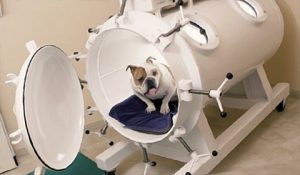 My sister, Katie, is studying veterinary science. This week she’s been assessing evidence for the efficacy of oxygen therapy in treating companion animals for conditions of reduced circulation (you know, infected wounds that won’t heal and all that lovely stuff). The things you get into when you’re at uni! In case you were wondering, there don’t seem to be too much research on the topic. With regard to humans, though, it is fairly well established that oxygen therapy can be of benefit as a treatment for said type of conditions.
My sister, Katie, is studying veterinary science. This week she’s been assessing evidence for the efficacy of oxygen therapy in treating companion animals for conditions of reduced circulation (you know, infected wounds that won’t heal and all that lovely stuff). The things you get into when you’re at uni! In case you were wondering, there don’t seem to be too much research on the topic. With regard to humans, though, it is fairly well established that oxygen therapy can be of benefit as a treatment for said type of conditions.
I’d never heard of this oxygen therapy, so I asked Katie to tell me about it. She said it involves the patient going inside one of these units called hyperbaric chambers – in the Melbourne area, there are a few different facilities that have these. In the chamber, they’re exposed to air with a high ambient pressure. This is a means of delivering 100% oxygen into the body, as opposed to the lower percentage of oxygen that we take in when we breathe normally.
Like I said, according to Katie’s research, the use of this treatment on non-human animals is relatively new, and it hasn’t been clearly established that it works. But for humans, it’s been found to be clinically effective in treating certain conditions. There are even portable hyperbaric chambers for home treatment on the market, which seem to be a cost effective way for patients to access it. That’s compared with the cost of going to a treatment centre, given that treatment generally seems to require an ongoing run of therapy sessions.
From my veterinarily uneducated perspective, I’d expect that, if this works for humans, it would work for mammals in general. Maybe mild hyperbaric treatments will one day be shown to improve the quality of life of dogs and cats with certain conditions. For the time being, I won’t go around promoting its use on non-human animals. But it sounds like it’s been very helpful for some humans, so we’ll see. ‘